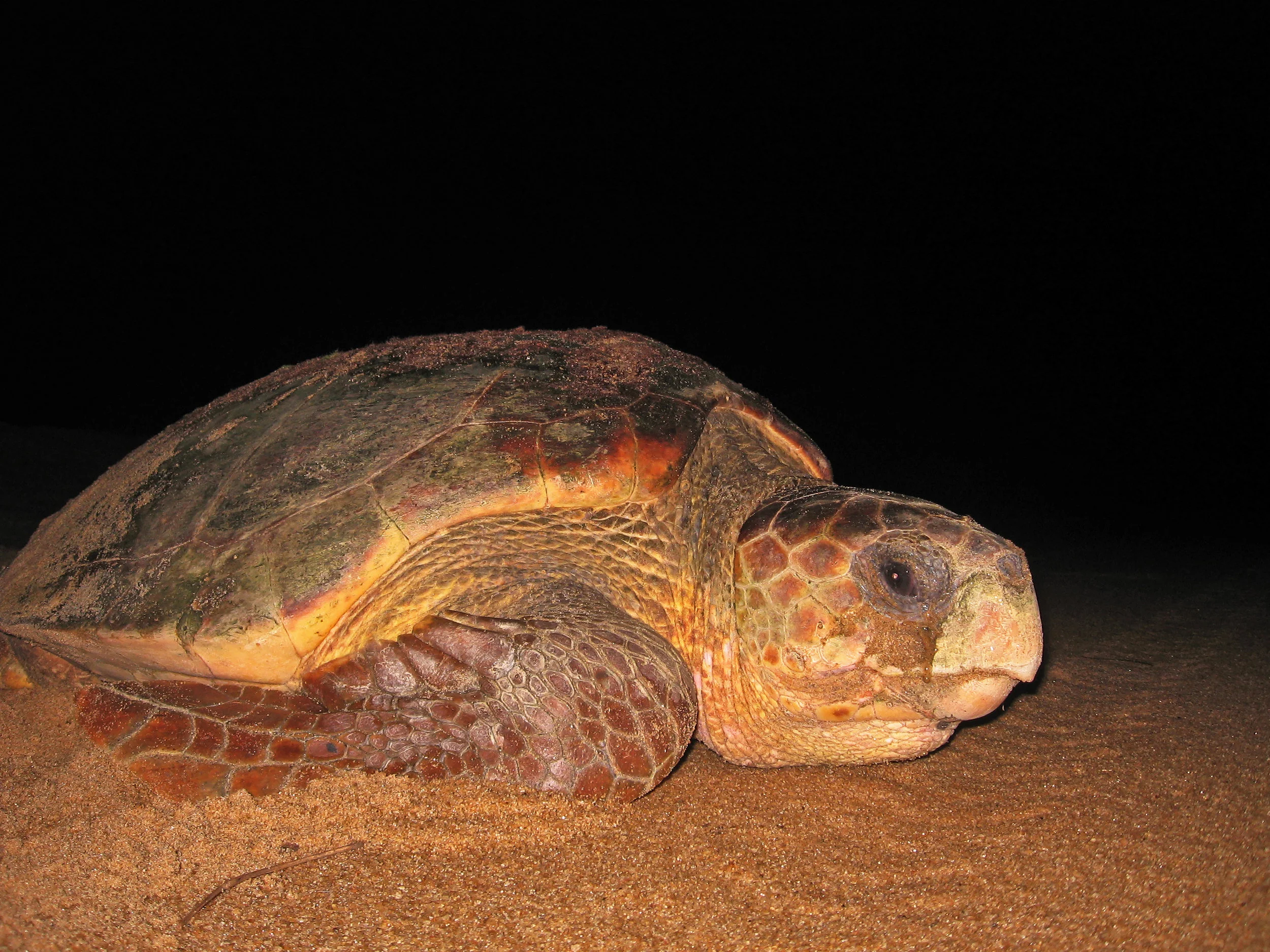
Loggerhead Sea Turtles
One of the larger species of sea turtles, the loggerhead turtle ranges from 200-400 pounds (90 - 180 kg) and up to 4 feet in length (1.2 meters). They occur throughout temperate and tropical regions of the Pacific, Indian, and Atlantic Oceans.
One of the most abundant of the species found in the US, they are named for their large head and strong crushing jaw (right) which enables them to eat hard-shelled prey such as crabs, conchs, and whelks. Learn about their diet.
Loggerhead Facts & Tidbits
One population of these turtles nests in Japan and migrates across the entire Pacific Ocean to the rich feeding grounds off the coast of Baja California Sur, Mexico, where they spend several years foraging and maturing.
In the US, most of their nests are laid in Florida. From, 1998-2007 nests in Florida had declined by 40%. Since then conservation efforts have tempered this tide and a steady increase in nests have been noted from 2008-2022.
They are listed as Vulnerable around the world by the IUCN Red List and Threatened in the US.
Their scientific name is Caretta caretta.
Distribution
Loggerheads are found in every ocean around the world. Only leatherbacks have a wider distribution. The largest concentration of nesting occurs on Masirah Island off the coast of Oman in the Middle East. In the Pacific, their main nesting grounds include Japan and Australia. In the Atlantic, the main concentration occurs in Florida. They are the most common species in the Mediterranean, nesting on beaches in Greece, Turkey, and Israel.
Major Threats
Their biggest threat is entanglement in fishing gear (also known as “bycatch”) in commercial fishing gear, including trawls, longlines, gillnets, and traps and pots. In the US trawl fishery, devices called TED’s, or Turtle Excluder Devices are required by law. These devices allow sea turtles to escape out of the nets, however in other parts of the world these devices are not regulated and they continue to be caught.
Scientific studies co-authored by SEE Turtles co-founder Dr. Wallace J. Nichols have shown the waters off Baja California Sur, Mexico to have among the highest rates of turtle bycatch in the world. In some parts of the world, they are also consumed for their meat and eggs. Beachfront development is also a threat, particularly in the Mediterranean.
Did You Know?
Masirah Island off the coast of Oman in the Middle East has the largest congregation of nesting loggerheads in the world, with an estimated 30,000 nests laid per year.
Loggerheads carry many organisms on their carapace (shell), like barnacles and crabs. Scientists have identified between 50-100 species of plant and invertebrate animals hitching a ride. These hitchhikers are called epibionts.
What is SEE Turtles?
We're a nonprofit organization that protects sea turtles through conservation travel and volunteer tours, our Billion Baby Turtles and Too Rare To Wear programs, our education programs, and by promoting inclusivity in the sea turtle community. Our award-winning programs help save sea turtle hatchlings on important nesting beaches around the world, work with the tourism industry to end the turtleshell trade, and educate students and travelers about how to help save sea turtles. Learn more about our organization.
Photo credits: Silvia Galli, Neil Ever Osborne, Ticiana Fettermann

